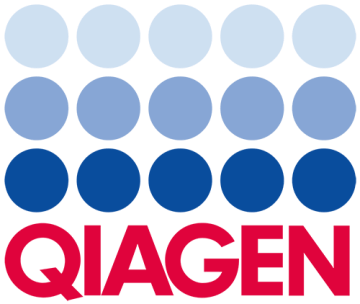KCNH2 Gene Summary
This gene encodes a component of a voltage-activated potassium channel found in cardiac muscle, nerve cells, and microglia. Four copies of this protein interact with one copy of the KCNE2 protein to form a functional potassium channel. Mutations in this gene can cause long QT syndrome type 2 (LQT2). Transcript variants encoding distinct isoforms have been identified. [provided by RefSeq, May 2022]
Details
| Type | Protein Coding |
| Official Symbol | KCNH2 |
| Official Name | potassium voltage-gated channel subfamily H member 2 [Source:HGNC Symbol;Acc:HGNC:6251] |
| Ensembl ID | ENSG00000055118 |
| Bio databases IDs | |
| Aliases | potassium voltage-gated channel subfamily H member 2, human ether-a-go-go-related gene, long QT syndrome type 2 |
| Synonyms | ERG,ERG-1,Erg2,ETHER-A-GO-GO,H-ERG,HERG1,Kv11.1,LQT,LQT2,M-erg,Merg1,merg1a,merg1b,potassium voltage-gated channel, subfamily H (eag-related), member 2,potassium voltage-gated channel subfamily H member 2,SQT1 |
| Species | Human, Homo sapiens |
Protein Domains
A protein domain is a distinct structural or functional region within a protein that can evolve, function, and exist independently of the rest of the protein chain. These domains often fold into stable, three-dimensional structures and are associated with specific biological functions, such as binding to DNA, other proteins, or small molecules.
- identical protein binding
- ion channel
- nucleotide-binding domain
- potassium channel
- ubiquitin protein ligase binding
- delayed rectifier potassium channel
- inward rectifier potassium channel
- Ion transport protein
- nucleic acid binding
- PAS
- protein domain specific binding
- protein binding
- sequence-specific DNA binding
- PAS fold
- Cyclic nucleotide-monophosphate binding domain
- phosphorylation site
- Cyclic nucleotide-binding domain
- voltage-gated potassium channel
- ER retention sequence
- binding protein
- PAS domain
- double-stranded DNA binding
- transmembrane domain
- protein homodimerization
- Motif C-terminal to PAS motifs (likely to contribute to PAS structural domain)
- CAP_ED
Pathways
Biological processes and signaling networks where the KCNH2 gene plays a role, providing insight into its function and relevance in health or disease.
Top Findings
The most significant associations for this gene, including commonly observed domains, pathway involvement, and functional highlights based on current data.
disease
- bipolar disorder
- traumatic brain injury
- stroke
- heart failure
- heart disease
- cardiovascular disorder
- major depression
- ventricular fibrillation
- long-QT syndrome
- ventricular arrhythmia
role in cell
- migration
- apoptosis
- repolarization
- afterdepolarization
- action potential
- refractoriness
- transmembrane potential
- degradation in
- invasion
- calcium oscillation
Subcellular Expression
Locations within the cell where the protein is known or predicted to be active, providing insight into its function and cellular context.
- Plasma Membrane
- plasma membrane fraction
- high-density microsomal fractions
- cell surface
- intracellular space
- perinuclear region
- cellular membrane
- Golgi Apparatus
- Endoplasmic Reticulum
Gene Ontology Annotations
Describes the biological processes, cellular components, and molecular functions associated with the KCNH2 gene, providing context for its role in the cell.
biological PROCESS
Functions and activities the gene product is involved in
- membrane repolarization involved in regulation of cardiac muscle cell action potential
- membrane repolarization involved in regulation of action potential
- potassium ion transmembrane transport
- potassium ion homeostasis
- regulation of ventricular cardiac muscle cell action potential
- regulation of heart rate by hormone
- regulation of membrane repolarization
- regulation of ventricular cardiomyocyte membrane repolarization
- membrane repolarization
- cardiac muscle contraction
- regulation of membrane potential
- positive regulation of transcription, DNA-dependent
- cellular response to xenobiotic stimulus
- regulation of heart rate by cardiac conduction
- membrane depolarization involved in regulation of action potential
cellular COMPONENT
Where in the cell the gene product is active
- perinuclear region of cytoplasm
- voltage-gated potassium channel complex
- plasma membrane
- cell surface
molecular FUNCTION
What the gene product does at the molecular level
- scaffold protein binding
- voltage-gated potassium channel activity
- identical protein binding
- protein binding
- ubiquitin protein ligase binding
- protein homodimerization activity
- C3HC4-type RING finger domain binding
- delayed rectifier potassium channel activity
- inward rectifier potassium channel activity
- transcription regulatory region sequence-specific DNA binding
- voltage-gated potassium channel activity involved in cardiac muscle cell action potential repolarization
